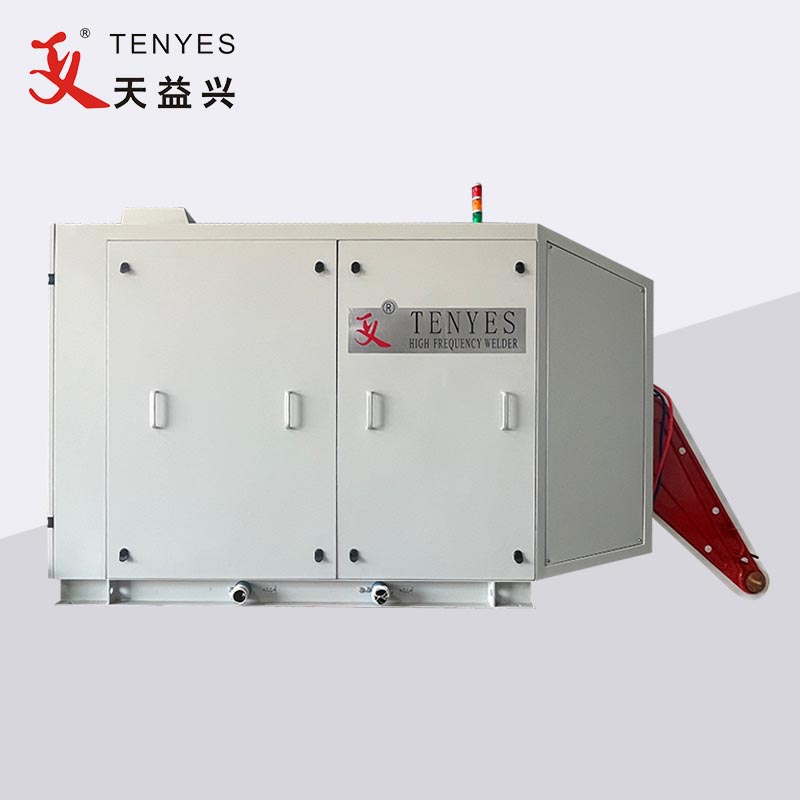How Has the Solid State High Frequency Welder Revolutionized Industrial Welding with Precision and Efficiency?
2025-02-24
In the world of industrial welding, precision, efficiency, and reliability are key factors that determine the success of the operation. Over the years, welding technology has evolved, introducing more advanced methods and equipment to meet the growing demands of modern industries. One such innovation is the solid-state high-frequency welder, a revolutionary tool that has greatly impacted how metal joining is performed across various sectors. But how has this technology improved the welding process, and what makes it stand out in comparison to traditional methods?
In this blog, we will explore the working principles of solid-state high-frequency welders, their key advantages, and the industries benefiting from their use.
What Is a Solid State High Frequency Welder?
A solid-state high-frequency welder is a type of welding machine that uses high-frequency electrical energy to join metals together. Unlike traditional welding methods that use mechanical or vacuum tube-based systems to generate heat, solid-state welders rely on advanced solid-state components like transistors and rectifiers to produce high-frequency power. This makes them more efficient, precise, and reliable in delivering consistent results.
The term "high-frequency" refers to the ability of these welders to operate at frequencies in the range of tens to hundreds of kilohertz (kHz), which is much higher than what is used in conventional welding processes. This high frequency is crucial for melting metal at localized points, ensuring strong, clean welds.
How Does a Solid State High Frequency Welder Work?
The working principle of a solid-state high-frequency welder is based on converting electrical energy into high-frequency alternating current (AC) using solid-state circuitry. The welder typically works by generating a high-frequency signal, which is then passed through the metal workpieces. The high-frequency current causes localized heating of the metal at the contact points, leading to the fusion of the materials at these points. The welded material is usually pressure-joined to ensure the integrity of the weld.
This process is particularly beneficial when welding materials that have a high melting point, such as stainless steel, titanium, or copper alloys. By using high-frequency energy, these materials can be welded without the need for excessive heat, which could damage the surrounding material.
What Are the Key Advantages of Solid State High Frequency Welders?
1. Improved Precision and Control
One of the standout features of solid-state high-frequency welders is their ability to offer high precision in welding. The use of solid-state electronics allows for precise control of the welding parameters, including the amount of heat generated, the welding speed, and the pressure applied. This level of control ensures that the welds are clean, strong, and free from defects, making it ideal for industries where precision is crucial.
2. Energy Efficiency
Traditional welding machines often generate excessive heat, which not only wastes energy but also increases operational costs. In contrast, solid-state high-frequency welders are much more energy-efficient. They can focus energy exactly where it is needed, minimizing heat loss and reducing the overall power consumption. This makes them more environmentally friendly and cost-effective in the long term.
3. Faster Welding Process
The high-frequency capabilities of these welders allow them to operate much faster than conventional welding methods. The localized heating provided by solid-state electronics enables the materials to reach the required temperatures quickly, which speeds up the welding process. This increased speed is especially valuable in mass production settings, where time efficiency can significantly impact overall productivity.
4. Reduced Heat-Affected Zone (HAZ)
In traditional welding, excessive heat can create a large heat-affected zone (HAZ), which may weaken the material around the weld. This can lead to problems like warping, distortion, and reduced strength. With solid-state high-frequency welding, the heat is concentrated at the welding point, minimizing the HAZ and ensuring that the surrounding material remains undamaged. This results in a higher-quality, more durable weld.
5. Low Maintenance and Long Lifespan
Another major advantage of solid-state high-frequency welders is their low maintenance requirements. Since these machines use solid-state components, there are fewer moving parts and no vacuum tubes to replace. This makes them more durable and reliable over time, reducing downtime and maintenance costs.
6. Versatility Across Materials
Solid-state high-frequency welders are highly versatile and can be used on a wide range of materials, from thin sheets of metal to thicker components. This adaptability makes them ideal for industries that work with different types of metals, including automotive manufacturing, electronics, and aerospace industries. Whether it's joining metals with a high melting point or delicate precision welding, these welders can handle a variety of applications.
Which Industries Benefit from Solid State High Frequency Welders?
1. Automotive Industry
The automotive industry requires precise and efficient welding methods to join various components, including body panels, exhaust systems, and electrical parts. Solid-state high-frequency welders are used extensively in this sector to achieve high-quality welds with minimal heat distortion, making them ideal for automotive assembly lines where speed and precision are essential.
2. Aerospace Industry
The aerospace industry involves welding materials like aluminum, titanium, and stainless steel, which require a high level of precision and minimal thermal impact. Solid-state high-frequency welders help meet these requirements by delivering localized heat to avoid damaging the surrounding components, ensuring the strength and safety of critical aerospace parts.
3. Electronics Manufacturing
In electronics, micro-welding of components is often required, especially for the assembly of delicate parts like circuit boards, connectors, and semiconductors. Solid-state high-frequency welders provide the precision needed for these small-scale welds, ensuring that the components are properly joined without compromising their functionality.
4. Medical Equipment
In the medical field, welding is used to create precise and secure joints in medical devices and instruments, often made of stainless steel or other corrosion-resistant materials. Solid-state high-frequency welders allow for clean and precise welding, which is crucial when creating medical tools that require a high level of hygiene and durability.
5. Jewelry and Watches
High-frequency welding is also used in the jewelry and watchmaking industries, where the need for precision is paramount. Solid-state welders allow artisans to join precious metals without distorting the intricate designs of rings, necklaces, or watch components, ensuring that the final product is both beautiful and durable.
Conclusion
The solid-state high-frequency welder has undoubtedly revolutionized the welding industry by providing a more efficient, precise, and reliable solution for joining metals. With its ability to minimize heat distortion, reduce energy consumption, and deliver fast results, it has become an indispensable tool in industries such as automotive, aerospace, electronics, and more. As technology continues to advance, it is likely that solid-state welders will become even more refined, offering even greater capabilities and applications for the future.



